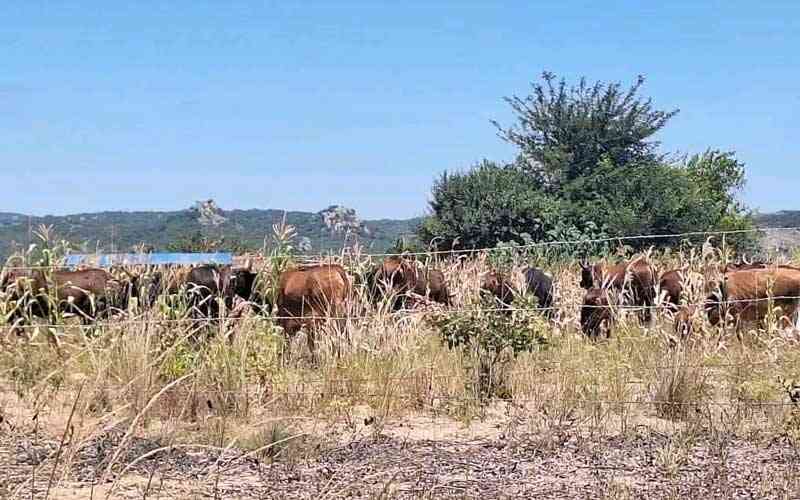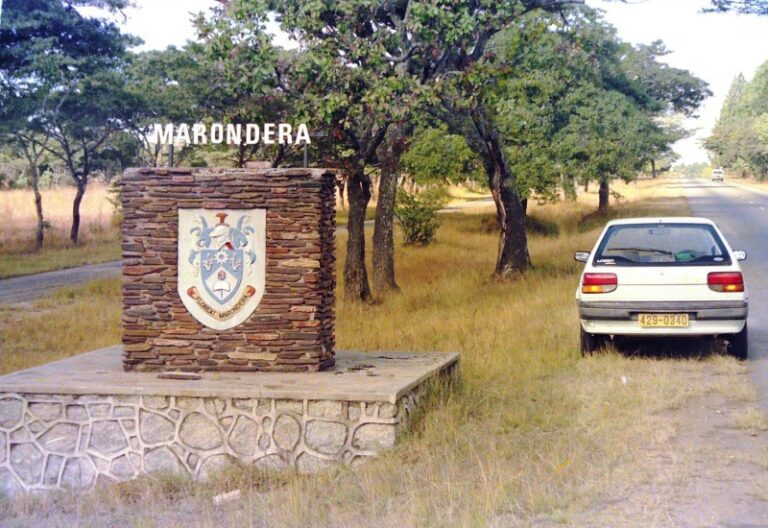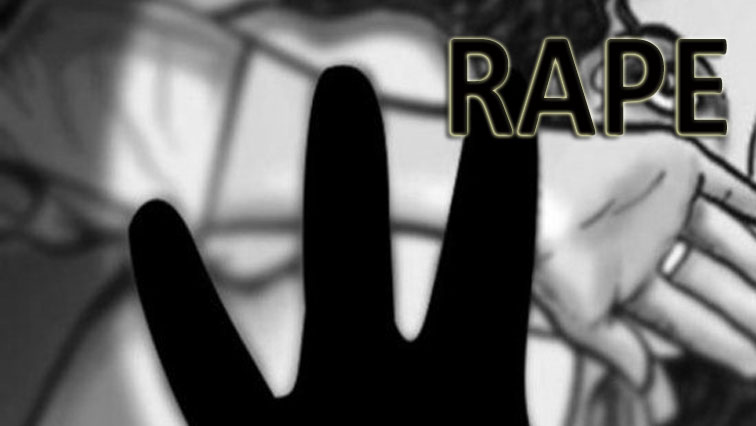
Once again, Zimbabwe is in the grip of one of the worst hunger crises, and this time, it is different as it is coming in the middle of a worsening economic meltdown.
With climate-related disasters such as floods and prolonged dry spells, exacerbated by the El Niño-induced drought, Zimbabwe's entire population is in for significant repercussions across all sectors.
The current drought is so acute that, according to international humanitarian institutions, about 2.6 million people, including 1.7 million children, are expected to require urgent humanitarian assistance.
Nearly a million people, including half a million children require safe water for drinking and domestic purposes.

The Crisis in Zimbabwe Coalition has raised alarm over the impending implosion, warning that the situation “puts the government on the spotlight regarding its obligation to provide social support to save lives.”
According to the constitution of Zimbabwe, the state is obliged to, among other things, ensure that citizens have food, water and access to social services.
Over the years, this has not been realised with the government facing accusations of not giving adequate financial resources and attention towards social service delivery.
Since October last year, what was hoped to be the beginning of a successful rainy season that would come as a relief following successive years of drought, turned out to be a long dry spell that has continued into February.
- Mavhunga puts DeMbare into Chibuku quarterfinals
- Bulls to charge into Zimbabwe gold stocks
- Ndiraya concerned as goals dry up
- Letters: How solar power is transforming African farms
Keep Reading
A trip down any road in Zimbabwe confirms the dire state of crops, and the subsequent challenges that come with drought.
In Chandavengerwa village, in Bindura, Bessie Kapfurutsa is distraught.
The 66-year-old grandmother has exhausted last season’s grain stocks and is not looking forward to any replenishment because her current crops have succumbed to the heat.
“This could be the year when we are just going to die of hunger,” she says, looking at her half-acre patch of the now lifeless maize crop.
Kapfurutsa is no different from the young mother of three, Sarah Mucheche in Uzumba district in Mashonaland East province.
As the drought intensifies, Mucheche’s once flourishing garden of vegetables, which has been her only source of nutrition and financial income, has withered under the scorching sun, leaving her family without any source of sustenance.
But the garden is not the only problem for Sarah.
As the scarcity of water sources becomes a daily struggle, Mucheche must walk long distances to fetch water from unsafe reservoirs and this poses serious health risks to her family.
“Boreholes and wells are drying up and we are forced to go digging for water in silted riverbeds,” she says.
“And here we share the water source with livestock and other animals.”
According to the Famine Early Warning Systems (Fewsnet’s) forecast for February to May, food insecurity across the country is set to worsen, with parts of Matabeleland, Mashonaland West, East and Central provinces being among the most affected.
A food Security and Markets Monitoring Report issued by the United Nations’ Office for the Coordination of Humanitarian Affairs (OCHA) in January, paints a gloomy picture.
“Livestock condition is fair in most parts of the country except in Matabeleland North and South as well as parts of Masvingo and Midlands province where it is reported to be poor due to unavailability of pasture and water,” reads the bulletin.
“If the dry conditions persist, parts of the southern region are likely to see an increase in food insecurity as well as challenges in accessing water for both human and livestock consumption.”
According to a situational report released by the World Food Programme last week, about 4,4 million Zimbabweans face hunger.

The WFP said the desperate hunger situation is further exacerbated by the harsh economic situation.
“However, it was observed that a smaller proportion of households had access to these livelihood activities, leading to increased vulnerabilities,” WFP said.
“Similarly, livestock sales and incomes were reported to be depressed due to poor livestock body conditions and constrained demand, mainly in the southern region and other typical low-rainfall areas.
“Below-normal access to income and ongoing macroeconomic challenges will likely deepen the challenges faced by vulnerable households in accessing essential needs.”
In January this year, Grain Marketing Board officials said the country had only four months’ grain supply, highlighting the crisis that the country faces.
In urban areas like Harare, the situation is no less dire.
The drought, combined with worsening economic challenges, is squeezing into the pockets of ordinary citizens.
In January 2024, the Zimbabwe Statistics Agency (Zimstat) reported that ‘headline annual inflation increased to 34.8%, with the local currency cost of living also rising by about 595 percent compared to January 2023.’
At the time of writing this article, the Zimbabwe dollar had hit about $15,000 to the US dollar on the black market.
When the local currency was reintroduced in 2019, it was pegged at three Zimbabwean dollars to each US dollar.
But policy inconsistencies, lack of transparency, among many other factors, have seen through the continued devaluation of the local currency, a situation that has continued into 2024, and led to the ordinary people bearing the brunt.
Over the past month, prices of basic goods have continued to go up following the introduction of some taxes on selected goods.
This has impacted negatively on the levels of disposable incomes, and while formal workers have been affected, the burden has escalated on the over 80% Zimbabweans who are in the informal industry.
Joab Makora, a former factory worker, who has set up a car wash at what used to be a bus terminus in the low-class suburb of Highfields, is grappling with the challenges of the increased cost of living.
“I used to charge US$5 for a single wash, but now I take as little as a dollar, because people will tell you they can as well just wash their cars at home,” he said.
“With my income going down, prices of basic goods are going up, and it is not sustainable anymore, but I have no choice.”
With inflation remaining high, necessities have remained largely unaffordable for many, pushing families like Joab's to the brink of poverty.
In urban and peri-urban areas the increasing poverty and vulnerability is so written all over that vending sites have cropped up pretty much everywhere.
Zimbabweans, grappling with lack of employment opportunities have defied local authority by laws and turned bus termini, street corners, road intersections and roundabouts, pavements, parking lots, recreational parks, roadsides, alleyways and any free spaces into improvised vending sites, garages, pool game centres and canteens.
With the grim reality of widespread economic hardships and food insecurity looming, communities across Zimbabwe face the harsh reality of dwindling resources and nutritional deficiencies.
Children like three-year old Tariro Mapuka of Mabvuku, weakened by malnutrition, bear the brunt of the crisis, with stunting rates soaring and wasting prevalence reaching alarming levels.
The health sector, already strained by an onslaught of diseases, is reeling under the pressure of disease outbreaks linked to poor water, sanitation, and hygiene services.
Cholera, which is now endemic, has been ravaging lives for a year now and despite efforts by humanitarian organisations to vaccinate people, the problem is likely not to go away as water reservoirs are likely to dry up earlier than usual.
With dams likely to dry up earlier than usual because of the dry spell, this means millions of Zimbabweans will not have access to clean water, a situation that exacerbates the spread of waterborne diseases, leading to a vicious cycle of illness and suffering.
The current outbreak has infected about 20000 people and so far killed more than 370, according to health officials.
In the face of these challenges, vulnerabilities are heightened, particularly for women and girls.
In Zimbabwe, gender-based violence rears its ugly head, preying on the marginalised and exacerbating existing inequalities.
Women like Rudo find themselves at heightened risk, forced to endure long, perilous journeys in search of water and sustenance, facing the grim spectre of sexual violence in their quest for survival.










